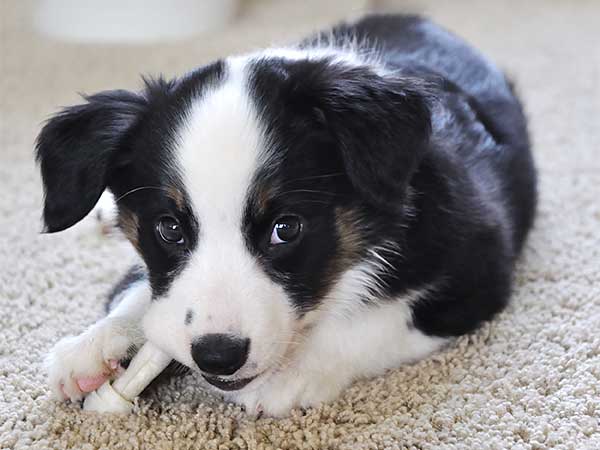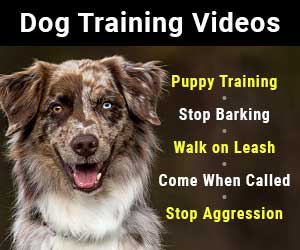
With Dog Chewing Training May Be Needed To Save Your Shoes And Furniture
Dog chewing training may seem like an odd idea but if you've ever had a puppy or even an adult dog that regularly made a snack of your favorite shoes or the legs of a chair or sofa, then you know what an issue chewing can be. It's something that usually begins as a puppy but if it isn't controlled properly when a dog is young, it may continue into adulthood.
Like human babies and toddlers, puppies initially explore their world by putting things in their mouths. As their teeth begin to emerge, usually between three to eight weeks of age, puppies will begin to chew both out of curiosity and to alleviate the pain of teething. This only increases as the permanent teeth begin to develop when the dog is between four and six months old.
In order to dissuade your dog from chewing the wrong things, you need to begin dog chewing training as early as possible. Because chewing can sometimes be the result of an underlying nutritional or medical issue, you should take your pup to the vet to make sure that he is healthy. If there is an underlying medical issue it will need to be addressed. If your dog is actually healthy, then it will be time to get serious about chew training.

Mark Herreid / stock.adobe.com
It's best to start training your Aussie as soon as possible about which things they can and cannot chew.
Again, as with human children, you'll want to ensure that your pup has a safe environment to explore. That means removing any toxic plants, cleaning solutions or other substances from his reach and also ensuring that he can't get at electrical wires and potentially electrocute himself. Make sure to move any items you don't want chewed out of his reach as well and close off any rooms that you can't fully puppy proof so he doesn't have access to them.
Now you can begin dog chewing training by encouraging proper chewing. Make sure your pup has toys, bones or treats that he can safely chew and that he understands the difference between these and the off limits objects. Remember he can't tell the difference between an old shoe and a new one, so don't give him an old belonging to chew as this will cause confusion. Avoid real bones or rawhide bones that might splinter and any toys or balls that may be a choking hazard or may become lodged in his mouth.
Redirection Is The Key To Dog Chewing Training
The gold standard of dog toys for power chewers.
Since a puppy can't tell the difference between what is acceptable to chew and what isn't, you need to reinforce this by taking away any off limits object he gets a hold of, then replacing it with a safe toy or bone. And always praise him when he chews the correct items so he begins to understand the difference.
Finally, when it comes to chewing it's important to remember that a tired dog is a well behaved dog. The more energy he expends playing or working, the less he'll have for chewing. This applies to any breed but is particularly important for high energy breeds like the Australian Shepherd. For Aussies and other working breeds, getting enough activity throughout the day is a vital part of success with dog chewing training.
Chewing can't be avoided as it's a natural part of being a dog, but you can help to point your dog in the right direction with a little carefully thought out dog chewing training. This way you'll be able to raise a happy dog and won't have to suffer the heartache of having your favorite things destroyed.
If you have this problem with your dog or are dealing with other behavior problems I highly recommend the online dog training program created by a professional dog trainer from New Zealand, called "Doggy Dan," that covers the principles of dog training, obedience training, and just about any behavior issue you're likely to ever have. You can find out more about Doggy Dan's comprehensive online video dog training program here.
Have Dog Training Questions?
Check out these introductory dog training videos...
I want my dog to stop being aggressive.
I want some help training my new puppy.
I want my dog to stop barking at everything.
Get Australian Shepherd Info, Website Updates, Special Offers, and Cartoons...
FREE GIFT
You'll also receive a free copy of the ebook
My Everyday Dog Training Tools
by professional dog trainer Daniel Abdelnoor, "Doggy Dan"













 Loading Image...
Loading Image...